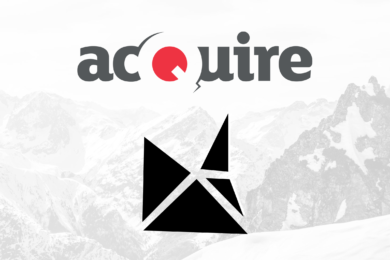The Global Acid-Rock Drainage (GARD) Guide is a recent development to support sustainable management of ARD. This internet-based global best practices guide for the prevention and mitigation of ARD was recently published by the International Network for Acid Prevention (INAP). INAP is an international consortium of major mining companies, working collectively to combat the issue of ARD. The guide’s objectives are to promulgate best practice in the prediction, prevention and mitigation of ARD. It endorses a risk-based, proactive and consistent approach by encouraging the reduction and control of ARD at its source by incorporating best-management practices into a mine’s operation throughout its lifecycle, as part of a ‘cradle-to-cradle’ approach.
As Terrence Chatwin, INAP and Rens Verburg, Golder Associates explain, “ARD is one of the mining industry’s most significant and potentially enduring environmental problems. ARD results when sulphide-bearing rock is exposed to oxygen and water, and combined with metal leaching can result in pervasive water-quality impacts. Methods are available to prevent ARD formation, but unfortunately these are not applicable to all existing ARD sources. In older closed mines, where ARD has and continues to occur, we are not always able to apply these modern approaches and long-term collection and treatment approaches may be required. These sites can continue to produce ARD representing a significant liability to mining companies, host countries and surrounding communities.
“The high liability costs of ARD carried by many mining companies and governments are a clear indication of the gravity of the problem for older, primarily closed mines. At the end of the 1990s, the estimated financial liability at mining sites was estimated to be A$1 billion in Australia, C$3 to 5 billion in Canada and US$5 to 72 billion in the USA. With the increased level of mining and the greater societal expectation that mining companies leave a positive legacy at their closed mines, these costs have significantly increased during the past decade.
“With environmental costs on this scale, global collaboration is vital as the industry as a whole faces increasingly stringent environmental regulations and the need to maintain a ‘social licence’ to mine.
“In producing the GARD Guide, INAP was greatly assisted by the Global Alliance (GA) composed of: the Acid Drainage Technology Initiative (ADTI) in the USA, the Sustainable Mining Institute for Knowledge Transfer (SMIKT) in Australia, the Mine Environment Neutral Drainage (MEND) program in Canada, the Partnership for Acid Drainage Remediation in Europe (PADRE) and the Water Research Commission (WRC) in South Africa. As noted from the diversity of our GA partners the GARD project is global in scope with technical expertise drawn from ARD experts in Australia, Canada, Europe, South Africa, South America and the US. Golder Associates was contracted by INAP to prepare and integrate comments from these experts into the initial version of the GARD Guide.
“Research into the ARD formation process has been underway for more than 50 years and a considerable body of research work exists; however this work is often difficult to access as it is widely distributed across different sources and much of the work is in the less accessible ‘gray literature’. There is also a tendency for research to focus on specific issues, commodities or geographical locations. To address these issues, INAP launched its program to create a state-of-the-art summary of the best practices and technology available to prevent and mitigate ARD regardless of the source or location.
The guide’s target audience is all stakeholders, including mining industry professionals, regulatory agencies, research organisations, financial institutions, NGOs, the general public and industry consultants. While focused on the mining industry, it may also prove relevant to practitioners in other fields dealing with water management related to rock excavations. Examples exist of highways, airports and construction sites where disturbed sulphide minerals have resulted in ARD.
Part of the guide’s appeal and applicability lies in its format as an online document – one with which today’s information-seekers are familiar. This also allows the GARD Guide to be a living document that will be regularly updated. The guide has extensive cross-referencing to information contained within it, as well as to external reference materials or stakeholder organisations involved with ARD issues.
The guide is expected to be of particular benefit to those working in developing countries by giving them access to state of the art knowledge and technology. Indeed, INAP specifies one of its five main goals as “leveraging the world’s ARD expertise and sharing it with developing countries”, which will also support the Equator Principles’ objectives of achieving best global practice in future mining projects.
The GARD Guide is ready for general industry use. It was formally launched at the International Conference for Acid Rock Drainage held at Skelleftea, Sweden in June 2009. INAP is currently seeking partnerships with mining organisations, government agencies and other groups to develop workshops to familiarise and train mining stakeholders engaged in preventing and mitigating ARD. The guide is located on the internet at http://www.gardguide.com/. More information about the INAP can be found at http://www.im-mining.com/wp-admin/about:blankwww.inap.com.au.
INAP is a group of mining companies who work to address acid drainage. INAP current consists of Anglo American, Barrick Gold, BHP Billiton, Freeport McMoRan, Kinross Gold, Newmont, Rio Tinto, Vale Inco, and Xstrata.
Terrence Chatwin is INAP Technical Director, [email protected]. Rens Verburg is Golder Associates Project Director for the GARD Guide, [email protected].








